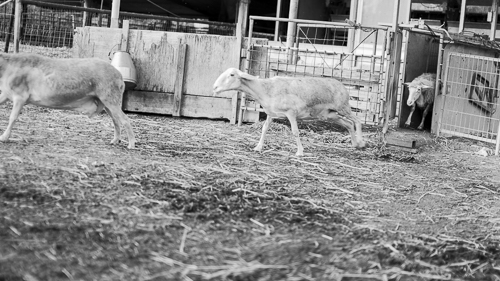
This family-owned farm is located a few kilometres north of the farm La Selva of which it’s a part.
The Farina family originates from Sardinia and have been here for three generations. They started this farm at the town of Talamone in 1992 and they moved here afterwards.
Luigi Farina is running the farm and he defines himself as as shepherd by passion and vocation and he combines tradition with innovation.
He’s the first shepherd in Italy who has started using a completely electronic system in order to monitor his flocks of sheep and the quality of their milk. Each sheep has a microchip inside its body, which identifies it and which lets the shepherds know its state of health and its production of milk by means of a smartphone. The presence of cells, whose size have increased and changed in the milk of the sheep, are also monitored and an alarm is turned on in case of modified cells. Next, the shepherd can immediately isolate this animal such that its milk doesn’t contaminate the good milk of the healthy sheep. Instead, a shepherd requires at least 3 days in order to discover if a sheep has sick cells, leading to that the milk has already been contaminated. Even though Luigi Farina considered this monitoring a hazard in the beginning, it has paid well off.
Another novelty includes hiring sheep shearers from New Zealand in order to shear sheep in 40 seconds only without restraining them, avoiding that the animals get stressed.
Like at La Selva, the well-being of the animals is of utmost importance for this farm and according to the brother of Luigi Farina, who is an employee at this farm, the sheep have a better life than us.
According to Farina, his objectives are keeping the farm, be self-sufficient and remain autonomous, while making money is of secondary importance.
This farm has an extension of 400 hectares and 60 of them are meadows, about 1300 sheep consisting of three types of sheep:
⦁ lacaune from France, high production of milk
⦁ assaf from Israel, high milk production, low level of casein (reference 1, reference 2)
⦁ sarda from Sardinia, good production of milk
Sheep’s milk contain about 7% fat, while cow’s milk contain about 3%.
The sheep eat alfalfa , clover in meadows if possible. Instead, they are staying inside enclosures eating fresh hay and a mix of cereals when it’s dry. Naturally, the taste of sheep’s cheese varies in accordance with what they are eating.
The sheep produce milk for their lambs and since they only get one lamb yearly, there are periods where they don’t produce any milk. Anyway, having three races of sheep, it’s possible to extend the milking season somewhat.
The sheep are milked by means of milking machines where two employees milk two groups of sheep at the same time. The sheep enter the building where they are milked twice daily and they enter an enclosure when they are finished. Each milking machine is equipped with a computer which registers which sheep is being milked and how much milk it produces.
Fortunately, there are natural springs providing water for the farm in this area.
The milk is brought to a dairy which is called Frisi di Castel del Piano that Farina has chosen for its particular micro-climate. There, the milk is turned into fresh, semi-ripened and ripened sheep’s cheese. This farm guarantees the quality of its products which are certified by ICEA. The certification of ICEA includes:
- the workers
- the animals
- the social aspects
- the production chain
The Farina family sell the cheeses themselves and transport it to local customers. However, a large part of the production is exported to Germany, but also to Austria, Japan and Iceland.
Farina has installed solar cells near the house of his family and the production of 12 kW provides energy to 30 families.
